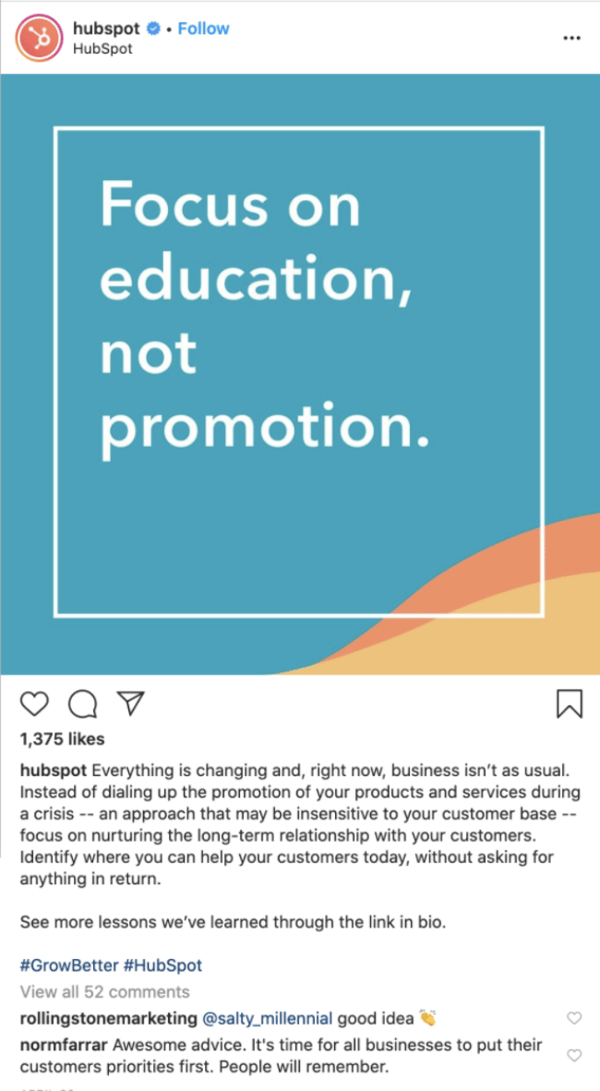
Tips to Repurpose Blog Posts into Winning Social Media Posts
May 21, 2020
Would you believe us if we told you that everything you need to craft high-performing social media posts across all of your channels is sitting on your blog? Businesses throw time, energy, research, and resources into producing compelling, persona-driven inbound marketing blog articles. Extending your content’s reach is a perfect way to maximize your efforts and reach more prospects.
A social media plan is an essential part of any inbound marketing strategy, because it helps promote your content in a natural and organic way. Here’s how you can take your blog content to the next level on social media to boost brand awareness, grow your business, delight your customers, and more.
How to Parlay Blog Content into Social Posts
In 2005, only 5 percent of U.S. residents used social media, according to Pew Research, but today a whopping 72 percent of Americans use some type of social media—and roughly 75 percent of Facebook users and 60 percent of Instagram users visit the sites at least once per day.
Repurposing your blog content into quick and witty social media posts will give your audience an opportunity to digest information quickly and effortlessly. But your prospects are busy on different channels, which means you need to cater your content not only to your buyer persona and Buyer’s Journey stage but also to the social media platform.
If you’re wondering how to repurpose inbound marketing blog content for social media, follow these four steps:
Step 1: Choose the Right Posts
Look through your website metrics and identify your top-performing evergreen content. For each post, pull out the thesis and three main points that support that thesis, as well as any compelling quotes or statistics.
Step 2: Write the Social Posts
Write two or three short-and-sweet social media posts for each network (more on recommended post lengths, hashtags, and tone for each network below). Be sure to link back to the original blog post and consider asking a question to get the conversation going.
Step 3: Create Supporting Visuals
Whether you use your internal design team or a site like Canva to create graphics, visuals not only complement your social media posts but they also make content more digestible and understandable. And yes, every social network is prime for supporting graphics and visuals, so you should make them a priority.
Step 4: Monitor the Comments
After you post your content, don’t forget that social media is about being, well, social. It’s important to monitor comments and reply to your fans and followers as much as possible in order to build engagement and nurture leads.
Let’s take a look at each social network and how you can take your blog content from your website to the rest of the world.
As the most widely used social network in the U.S.—nearly 70 percent of Americans are on the site and 74 percent log in daily—Facebook is a platform built on conversation and connection. People not only share trending memes and meaningful personal stories, but they also poll family and friends about everything from the best local gelato to where to get their tires rotated to which bank has the best customer service.
Your tone on Facebook should be friendly, accessible, and conversational, while staying true to your brand voice. Remember that Facebook cuts off longer posts, which can be a deterrent for readers because they have to click “See More” to read the full message. When writing organic Facebook posts, keep them concise—posts of 80 characters or fewer get 66 percent more engagement—and avoid hashtags, which are better suited for other platforms. 
Instagram is, by its very nature, a visual social network, and a lot of brands struggle to repurpose blog content (or post at all) on Instagram because of the visual emphasis. However, you can create successful blog post-inspired Instagram content by choosing a powerful, complementary image, a caption that adds context, and a clear call to action—a few emojis wouldn’t hurt either.
Avoid creating text-heavy images, because the more text you have, the smaller the font and the more impossible it is to read. Instead, find supporting images or create graphics that highlight a data point, quote, or the blog title itself; then write a caption featuring your main points and kick the reader over to the full blog article using Linktree in your bio. Although Instagram captions can be up to 2,200 characters long, remember that people zip through their feeds quickly so you should keep your captions concise, helpful, and action-oriented.
And don’t forget the hashtags! Use hashtags that are inspired by the keywords you used in your original content.
With more than 546 million members, LinkedIn is the most professional social network on the internet, and it offers a platform for showcasing your team’s expertise and thought leadership. However, just because LinkedIn is made up of professionals connecting with other professionals doesn’t mean your posts always have to be brimming with statistics or overly serious and buttoned up.
LinkedIn is the perfect place for gaining authority and displaying your thought leadership, so make sure you cater your content for the channel. Consider using an authoritative statement or statistic from your blog to set up the post and then urge the reader to continue reading or answer a question.
Keep the tone professional but human and approachable, and try to write posts that are short—around 25 words—because of that pesky “Read More” deterrent. Tag your posts with relevant hashtags, but use them thoughtfully and intentionally.
Although only 22 percent of Americans use Twitter, it’s one of the noisiest and most crowded (not to mention divisive) social media platforms, and it can be hard to break through the clutter to reach your prospects—no matter how amazing your repurposed blog content.
The key is to cater the morsels you pull from your blog to the network. Your tone on Twitter can be more lighthearted and snappy, but keep your buyer personas and brand voice in mind when tweaking your posts for Twitter. Consider leveraging a powerful pull quote, dynamic statistic, or compelling finding along with a complementary graphic or image from a site like Pexels or Unsplash.
Although tweets can be up to 280 characters, studies have found that those with fewer than 100 characters receive more engagement than their lengthier counterparts—and that includes hashtag character counts.
Start Repurposing Blog Content for Social Media
To kick off your blog-posts-turned-social-posts efforts, start auditing your blog content. An audit will help you pin down your best evergreen posts, identify older posts that can be better optimized, or rewrite those that didn’t perform as well as you may have liked. Then, create a content calendar, which will ensure you have a constant stream of high-quality, social media content in the hopper.
Don’t forget to keep tabs on your social media metrics to see what people are engaging with and what is flopping. The more you post on social media, the greater the likelihood you’ll start seeing user-generated content (UGC)—whether in the form of quotes, testimonials, pictures of people using your products or services, and so on. That UGC can then be added to your content calendar to support your social media efforts.
If you want to take a step back and refine your inbound marketing blog writing chops before you start repurposing content, check out this article: “Beyond the Basics: Next-Level Tips for Writing Inbound Blog Articles.”
This post was originally published in 2018 and has been updated since.

About the author
Chaviva Gordon-Bennett was formerly a Senior Copywriter for SmartBug Media. She graduated from the University of Nebraska-Lincoln with a bachelor's degree in journalism. As a Senior Copywriter, Chaviva writes inbound marketing content for SmartBug's clients. Read more articles by Chaviva Gordon-Bennett.









